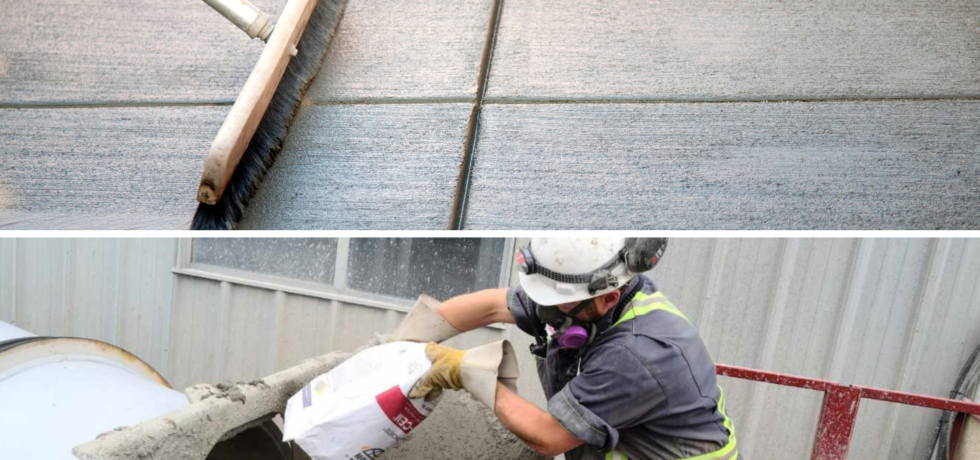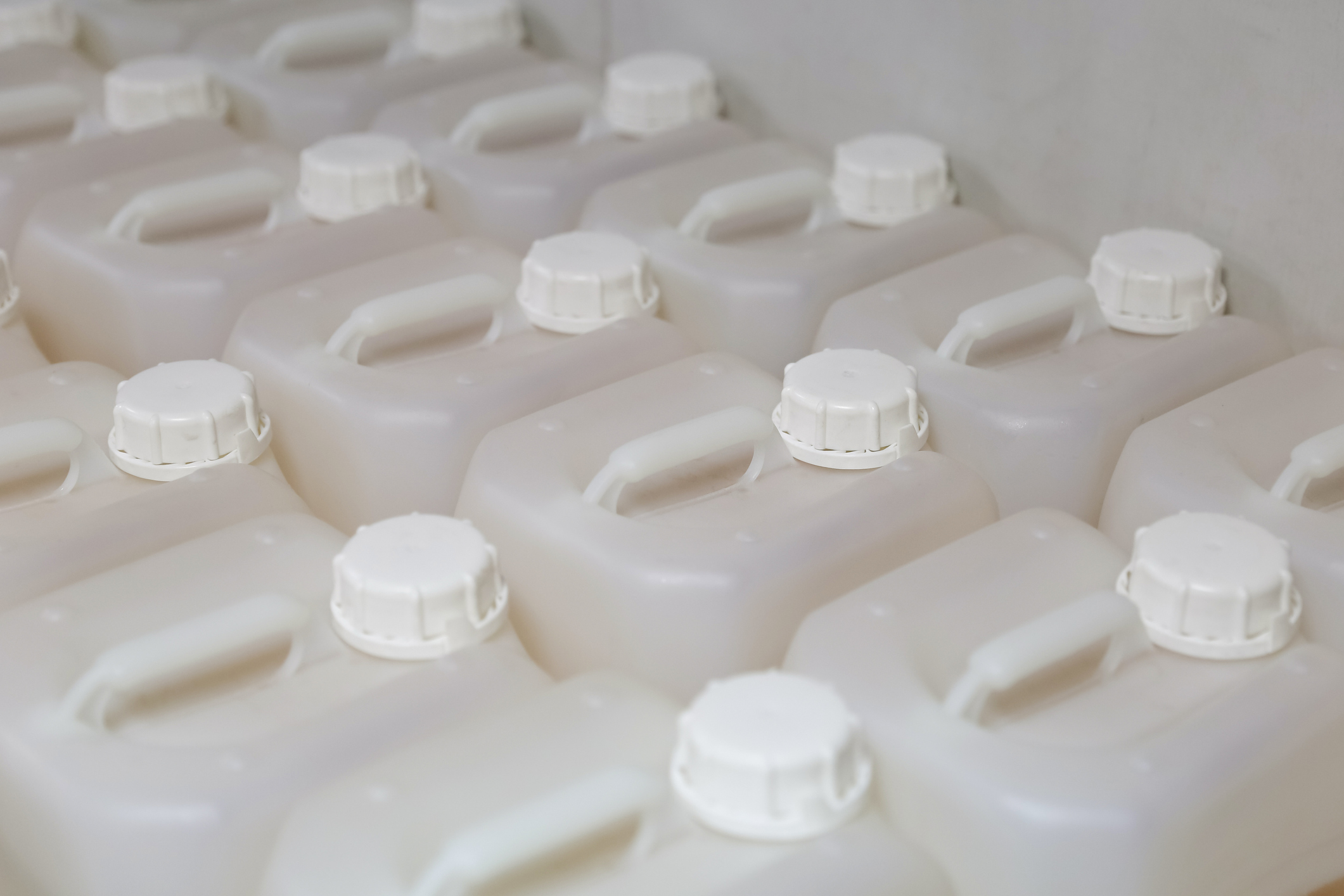However you’re involved in concrete construction, you know that concrete durability (or more specifically its abrasion resistance) is critical to a structure’s success. Without it, your project team may end up creating a structure that doesn’t last the way it should. And you may even have lower property values, lost productivity, and higher maintenance costs to worry about. All of which means building owners will need to use up even more resources for maintenance and repairs.
It’s a costly issue, but it is avoidable. And that’s why you focus first on a solution that can enhance your concrete’s resistance to abrasive forces.
Luckily, there are many choices out on the market today that advertise themselves as capable of providing you with exactly that. Some of which include the popular liquid hardeners and our very own award-winning Hard-Cem.
Both of these particular choices have been on the market for years. And many industry professionals feel they’ve gotten their desired value out of either product or a combination of the two.
They might have even caught your attention.
Still, do you really need both products? Could you just use one product instead of two? And if so, which is better for concrete durability?
Some Might Say Liquid Hardeners
If you get a solution that’s inexpensive and still does the exact work you want, you’re likely going to choose it. It’s this mindset that makes liquid hardeners seem so appealing. After all, these products are advertised as a way for you to make the surface of your concrete harder. And combined with their history of common use and minimal impact on a budget, it might seem like they’re a highly effective solution.
However, Their History Suggests Otherwise
Based on their originally marketed purpose, liquid hardeners weren’t meant to harden concrete at all. And their history of testing hasn’t been completely satisfactory. All of which puts into question just how effective they really are.
For One, They Weren’t Meant to Help with Durability in the First Place
Initially, they were developed as a way to reduce the dusty surface that can result from the improper finishing or rapid drying of a freshly placed slab. It was a great remedial measure for defective slabs, but it’s questionable how effective it would be for properly designed and placed slabs.
Moreover, Liquid Hardeners Just Don’t Offer Enough Substantial Proof of Their Performance
For one, many liquid hardener companies will present their own internal tests instead of third-party testing as a way of demonstrating their products’ effectiveness. Of course, this is not necessarily a negative issue in and of itself. After all, it can give clients a better idea of what to expect in some cases. However, it can also lead to widely varying results skewed in the company’s favor.
You may even come across companies advertising liquid hardeners as products capable of sticking to certain aspects of the standard ASTM C309 — Standard Specification for Liquid Membrane-Forming Compounds for Curing Concrete. However, liquid hardeners do not actually meet the intent behind that standard’s requirements. That’s because they are solutions that react chemically within concrete and do not form liquid membranes or prevent early water loss when tested to the ASTM C309.
On top of that, there’s even a debate between industry professionals on just how much of an impact liquid hardeners have on concrete. For instance, some say liquid hardeners only affect the near-surface wear zone as the molecular shape of the silicates can’t get further through the concrete’s capillaries below. So they end up as deep as about 4 mm to 5 mm (or 1/8 in to 1/4 in) within the surface. However, not everyone agrees with this concept.
All of which makes the impact of liquid hardeners look very dubious.
Still, there are a few people here and there who earnestly note that some liquid hardeners seemed to increase their concrete’s abrasion resistance and produce a more polishable surface. But that isn’t guaranteed proof that you can buy just any liquid hardener and get good results. In fact, the online publication Concrete Decor recommends that for the most accurate results, contractors should examine their desired hardener with independent, third-party testing.
Someone Wanted to Test Liquid Hardeners on Their Own and Found Just as Poor Results
To make sense of it all, Concrete Flooring Consultant George Garber wanted to thoroughly investigate liquid hardeners on his own.
Based on his own industry experience, George knew that liquid hardeners had been around since at least 1910. But he also knew that no one had explicitly shown that they could improve the wear resistance of concrete floors.
Certainly, manufacturers claim to have plenty of evidence of this benefit. And them being the source of this evidence doesn’t necessarily invalidate that claim. However, as previously mentioned, it certainly invites in some decent scrutiny. After all, manufacturers are more likely to be biased toward their own products.
So to negate that bias as much as possible, George decided to test liquid hardeners by measuring their effect on six concrete floors. The end results were incredibly underwhelming. The first test showed that the hardener had barely reduced any wear depth, cutting off only 2%. In other tests, the liquid hardeners didn’t make any difference to the concrete. And in some cases, the concrete treated with the liquid hardeners ended up worse for wear than the regular concrete!
Based on these results, George concluded that in his experience, liquid hardeners did not help concrete floors resist wear. However, he does note that there are third-party tests that present results in opposition to his. For instance, researchers Massud Sadegzadeh and Roger Kettle from the Aston University in the UK noted that liquid hardeners could modestly improve wear resistance under the right conditions.
Overall, though, it seems that even when proved to offer benefits, liquid hardeners provide minimal positive impact.
So, What about Hard-Cem?
We’ve gone through the good and the bad of liquid hardeners, but how does Hard-Cem hold up?
From Its Inception, Hard-Cem Was Designed to Enhance Concrete Durability
Well, right at the start, this integral admixture has an advantage over liquid hardeners. Unlike the latter products, Hard-Cem was intentionally designed by Cementec Industries Inc. to provide concrete with superior hardness and increased levels of resistance against erosion and abrasion under severe conditions.
How?
Well, when added to a concrete mix, Hard-Cem increases the hardness of the concrete paste. This reduces the wear loss of the paste and the loss of the fine and coarse aggregate. All of which makes the resulting concrete more durable against the typical wear and tear it could encounter.
It’s an effective way to harden concrete and caught a vast amount of interest at the World of Concrete 2007, helping Hard-Cem earn the Most Innovative Product Award.
It Even Offers Solid Proof of Its Effectiveness
To back up its appeal, Hard-Cem has performed well under tests from reputable third-party companies.
These include the following tests conducted by AMEC Earth and Environmental (now part of John Wood Group Plc.):
- ASTM C627 — Standard Test Method for Evaluating Ceramic Floor Tile Installation Systems Using the Robinson-Type Floor Tester
- ASTM C232 — Standard Test Method for Bleeding of Concrete
- ASTM C672 — Standard Test Method for Scaling Resistance of Concrete Surfaces Exposed to Deicing Chemicals
- ASTM C666 — Standard Test Method for Resistance of Concrete to Rapid Freezing and Thawing
- ASTM C403 — Standard Test Method for Time of Setting of Concrete Mixtures by Penetration Resistance
- A compressive strength test
- A flexural strength test
And for each test, Hard-Cem proved again and again that it was capable of protecting concrete from a significant loss of mass without impairing critical factors like compressive and flexural strength or resistance to freeze-thawing or salt scaling.
All of Which Has Enabled It to Produce Satisfactory Case Studies
So it’s safe to say that Hard-Cem does produce effective results that can be replicated through testing. But what about out in the field? After all, a test environment is not quite the same as a real-life one.
No worries there either!
Hard-Cem has made a good name for itself, helping construction workers protect a number of major projects. In particular, it helped the creation of Canada’s Metro Skate Park. In fact, it wasn’t long after the park’s creation that it won awards for its concrete design. And the City of Burnaby was happy to give Hard-Cem recognition for the design’s quality and durability.
Our integral hardening admixture has even gone on to support projects on a larger scale with great success. For instance, the White River hydro dam is still reliably generating power with the help of 6,000 m3 of Hard-Cem concrete. And more recently, BC Hydro has also chosen to use Hard-Cem concrete for their latest hydro dam project.
In Short, You Will Likely Be Better Off with Hard-Cem
There is still a lot of debate over how effective liquid hardeners are. And even when they do produce positive results, it seems the impact is fairly minimal.
By contrast, Hard-Cem offers plenty of evidence that it affects the entire concrete pour, giving concrete slabs an integral durability.
Still, it is a versatile admixture, so you could use it in tandem with liquid hardeners if you wanted to test the waters with both products.
Either way, in the long run, you’ll likely find your concrete doing better with Hard-Cem in the mix.








